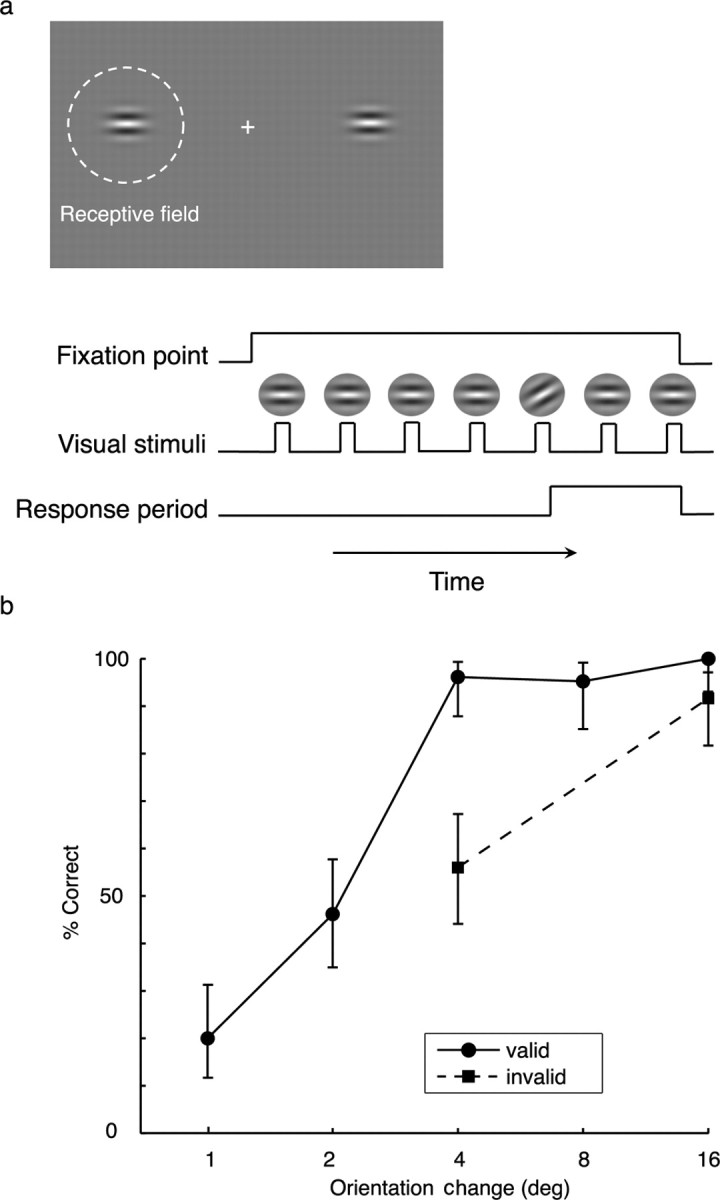Figure 1.

a, Spatial attention task. Trials began with the appearance of a fixation cross at screen center, followed by a cue to attend either to a position inside the recording electrode's receptive field (inside the RF) or to an unresponsive position in the diametrically opposite location (outside the RF). During each trial, two identical Gabor patches were simultaneously flashed in both positions and the orientation of one of the two Gabors changed at a random time in one of the two positions. Subjects were instructed to respond to press a button in response to any change in the orientation of the Gabor stimuli. b, Effect of spatial attention on behavioral performance for a sample subject. Psychophysical data collected concurrently with recording of neuronal responses illustrates the percentage of correct detections of different orientation changes presented during the spatial attention task. Error bars indicate 68% binomial confidence intervals. Invalid cues were used only on trials with 4° or 16° orientation changes. The significant enhancement of detection of the 4° orientation change for valid versus invalid cues provides behavioral confirmation that the subject was preferentially directing attention to the cue location.
